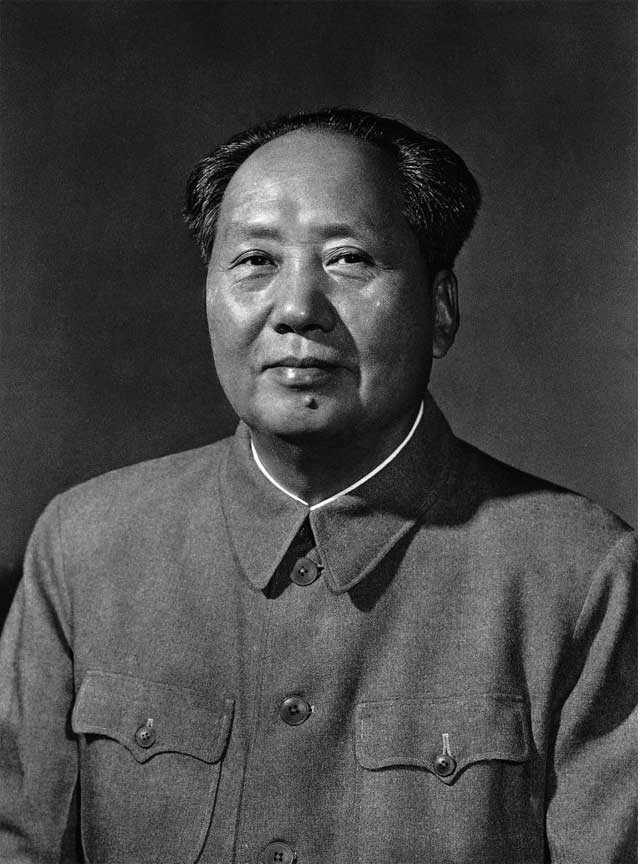Mao Tse- Tung
1893- 1976
Chinese Politician

Mao Tse-Tung studied at Peking University, where he first encountered Marxism, and was converted to its cause. In 1921, Mao was a founding member of the Communist Chinese Party. He was its leader in Hunan province. Mao worked closely with the Kuomintang until their split in 1927, at which time he fled to the countryside and organized the Communist guerrillas. In 1934, Mao organized the "Long March." He and his followers marched 6,000 miles, arriving in Shensi and establishing a new government at Yenan. During the war with the Japanese, the Communists collaborated with the Nationalists in opposing the invaders. After the war, the truce broke down, and by 1946, full-scale civil war was occurring.
With the complete victory of the Communists over the Kuomintang in 1949, Mao established the People's Republic of China with himself as Chairman. Mao led Communist China through a number of upheavals, including the "Great Leap Forward" in 1959.
He had split with the Soviets on ideological grounds by the late 1950's, a split that was to have profound geo-politcal impact.
In the 1960's his wife spearheaded the "Cultural Revolution," a final failed attempt to impose Marxist dogma on all aspects of Chinese life. In the 1970's Mao helped steer China's course in re-establishing relations with the United States.
Bibliography:
Archer, Jules. Mao Tse-Tung. New York. Dutton E P. 1972. Han, Suyin. Wind in the Tower: Mao Tsetung and the Chinese Revolution, 1949-1975. Boston. Little, Brown. 1976.
Wilson, Dick. Mao Tse-Tung in the Scales of History. London. Cambridge University Press. 1977.
Wilson, Dick. The People's Emperor: A Biography of Mao Tse-Tung. 1980. Doubleday & Co. Inc.
 >
>